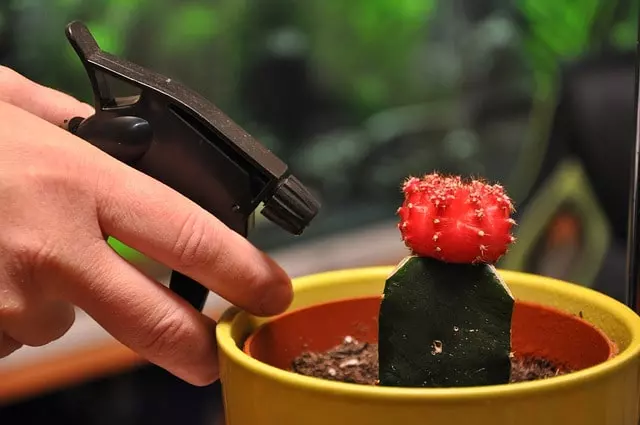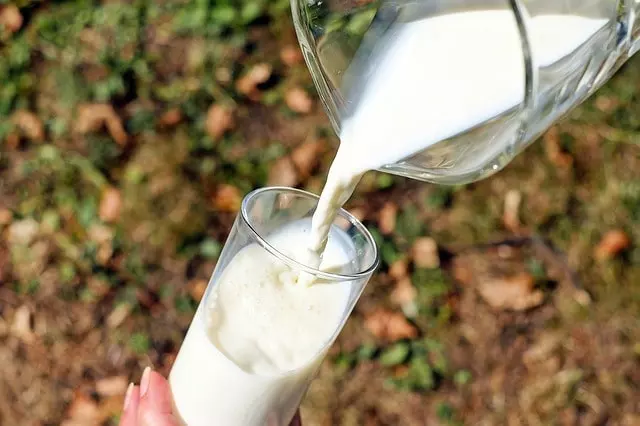Milk is one of those products that is a must in any refrigerator or pantry. Almost everyone likes it with cocoa, coffee, tea, or even alone, but milk has much to offer even beyond the animal kingdom, as it is an excellent ally in the care of your plants. If you want to know its benefits and how to use milk for the plants in your garden, orchard, or house, join us in this article.
Table of Contents
How To Use Milk for Plants
Milk has a myriad of uses for growing plants, from using milk as a fungicide to its usefulness as a natural fertilizer, to treating other types of diseases and pests.
However, we know that milk is a valuable product, so you don’t have to worry: it’s not necessarily the case that you buy milk expressly for use in your plants, because the good news is that expired milk, which is no longer fit for consumption, is still just as useful for plants. In this way, you can take advantage of that carton or bottle of milk whose expiration date has passed and you will not have to waste it by throwing it away: an ecological alternative to give use to that valuable milk and, at the same time, bring health to your beloved plant companions. In all these cases it is recommended to keep the milk cold, and for these uses it doesn’t matter if it is whole or skimmed milk, as well as if it has lactose or not: they all work the same.
The most important thing is that you do not exceed the quantities of milk to use in any of the cases, since in gardening more is not always better. If you use too much milk, you could cause blockages or plugs in the plant’s systems, as well as bad odor from too much lactose degradation. Ultimately, too much would reverse the benefits of the substance and be detrimental to the plant.

Milk As a Fungicide
Milk is an excellent natural fungicide, making it one of the best ecological remedies for treating a wide variety of fungi on your plants while maintaining strictly organic cultivation and without resorting to artificial chemicals of any kind.
It is particularly effective against powdery mildew, one of the most harmful and common fungal diseases. Its spores are naturally found almost everywhere, spread by rain, wind and animals. Luckily, milk has been shown to be as effective a fungicide against it as synthetic chemicals and sulfur, so you can treat powdery mildew on your plants for very little money and naturally using milk.
To make a homemade fungicide with milk, follow these steps:
- Pour 10 parts water to 1 part milk in a spray bottle.
- Spray your plants approximately every 2 weeks, paying attention to both the back and underside of the leaves, as well as the stems and fruits.
- At this concentration, milk fungicide is a good preventative method, whereas if your plants have already been infected, we recommend using a higher concentration of milk and spraying the plants daily for three days in a row.
It is also an excellent treatment against the fungus called Diplocarpon rosae, known to cause characteristic black spots on plants of the rose family. The lactoferrin contained in milk is a first-rate bactericide and fungicide in these cases, and a weekly spray of milk dissolved in a ratio of 1 part milk to 2 parts water will suffice.
Milk As a Gardening Tool Disinfectant
Although the best option for disinfecting pruning tools is always alcohol or some equivalent preparation, you may find yourself in the situation of not having a disinfectant for your tools when you need it.
Pruning without disinfecting is very dangerous for your plants and can result in real disasters, so an alternative solution is to clean the tools you want to disinfect with milk. This has the ability to act as a disinfectant and, as mentioned above, as a fungicide, so it will help prevent the unintentional spread of disease when pruning or treating your plants.
Milk To Clean the Leaves of Plants
If plants accumulate too much dust and dirt on the surface of their leaves, they will find it more difficult to absorb solar energy and perform gas exchange. To avoid this and bring back the shine to the leaves there are many homemade tricks at your disposal, milk being one of the most used.
Moisten a cotton cloth in milk and carefully wipe the surface of the leaves of your plants. You will see how it leaves the leaves of the plants clean and shiny and, in addition, it will help to kill any harmful bacteria or fungus that they may have.
Milk As Fertilizer
One of the best uses for stale or expired milk is as a soil fertilizer. You can use up to 1/2 liter of diluted milk per square meter of the garden to increase the population of beneficial microorganisms in the soil, resulting in healthier plants. Follow these steps:
- Use a dilution of 1 part milk to 4 to 5 parts water so that it penetrates well.
- Pour it as if it were irrigation water.
- Repeat the process every 10 weeks in the warm season.
We hope that this article about milk for plants will be useful in your garden. We recommend our article about rice water for plants: benefits and how to prepare it.


